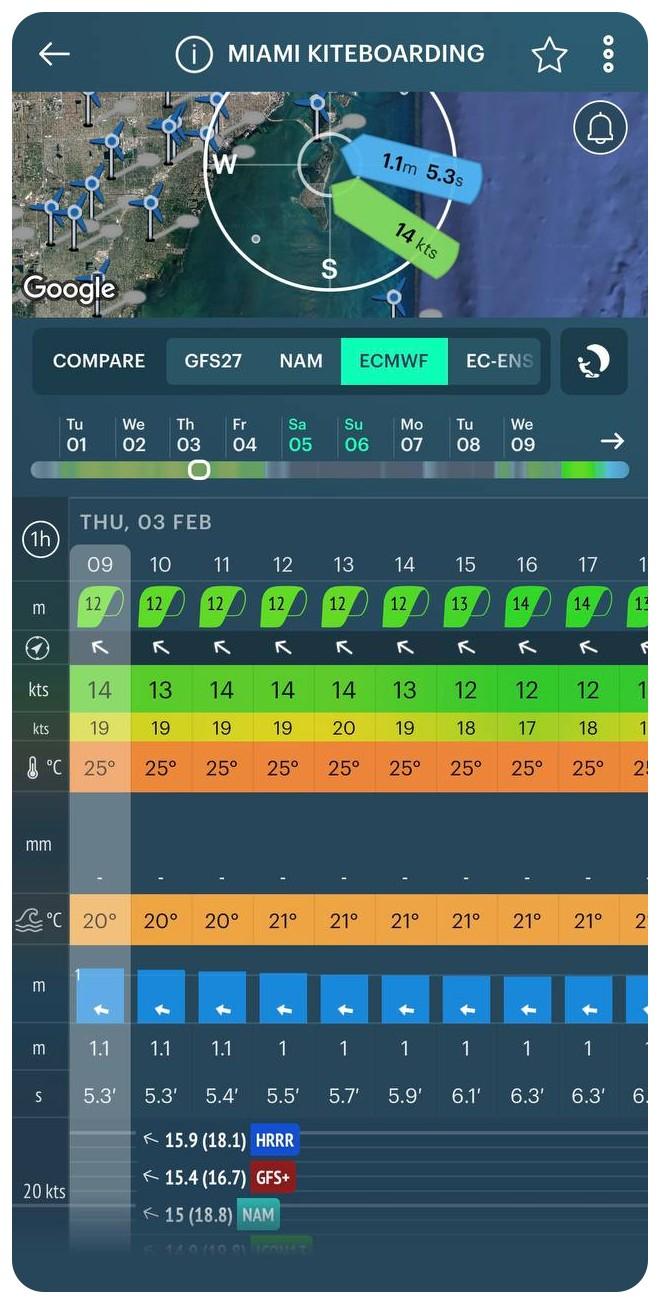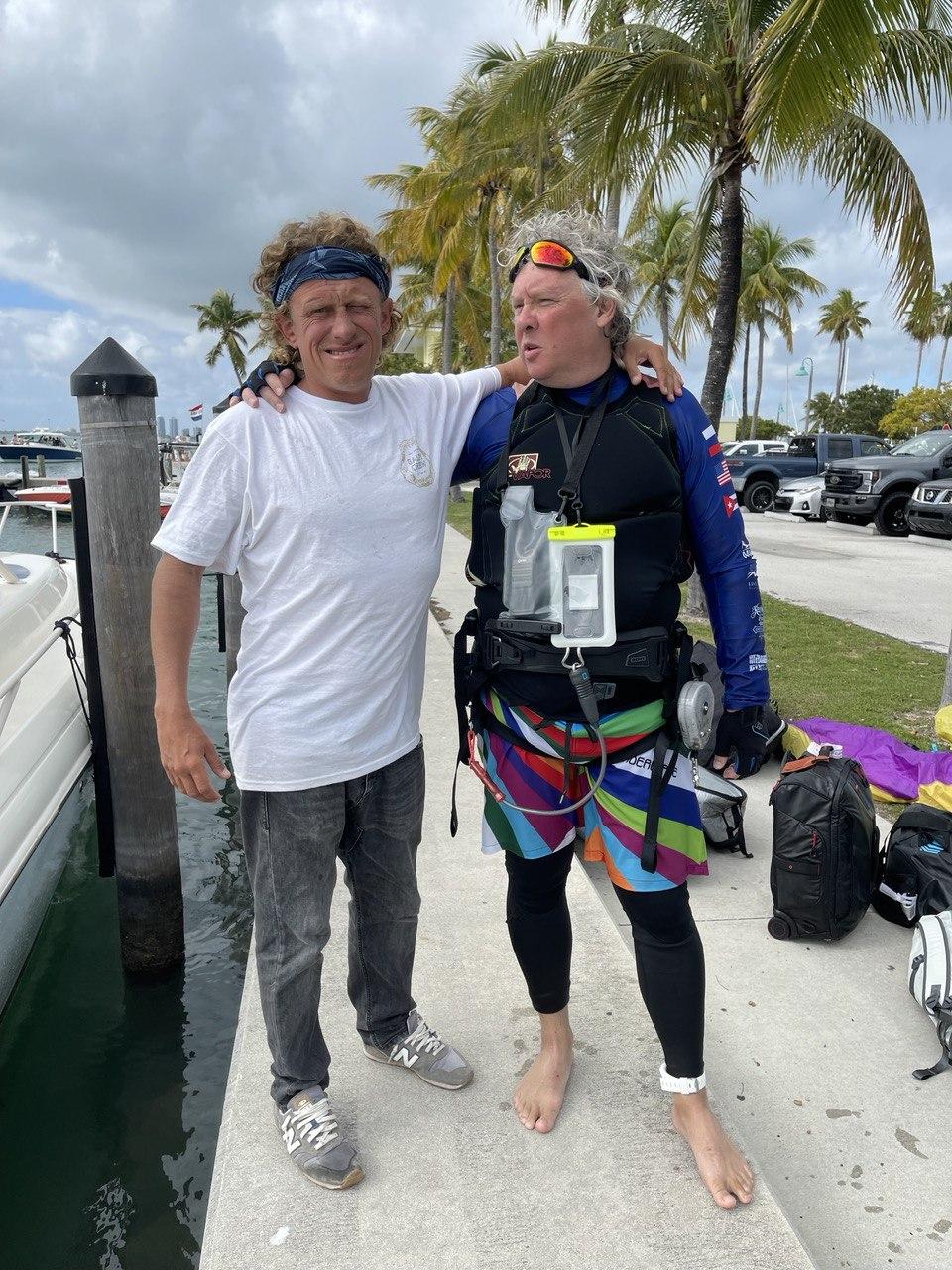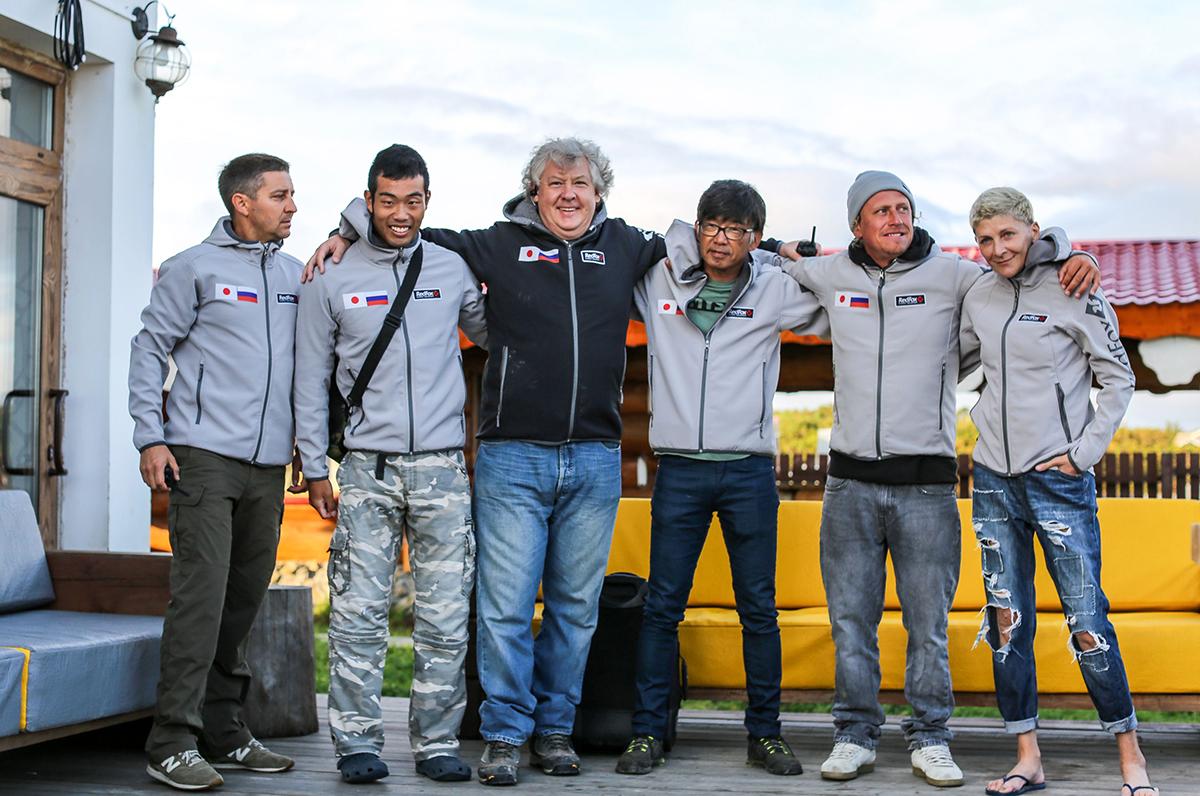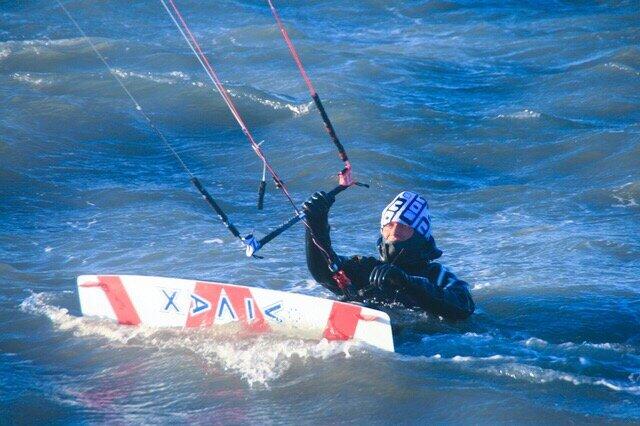
Meet the record-setting kitesurfers who cross the world’s oceans
On February 4, 2022, a group of three professional kiteboarders — two Russians and one American — passed 108 km (67.11 mi) in the Straits of Florida between the Bahamas and Miami, USA. And that’s a world record for this kind of sporting voyage.
But the most interesting thing is that it is not their only such achievement. They have been setting such kite-records on a regular basis all of the past 10 years since 2011 when they crossed the famous Bering Strait between Chukotka Peninsula in Russia and Alaska in the US.
We had a little chat with some of these kiters and in this article we briefly describe the major crossings they’ve made for far.
Straits of Florida: the Bahamas — Miami
To be more specific, the kitesurfers started at Bimini Island in the Bahamas and finished at Key Biscayne Beach in Miami. It took them exactly 5 hours and 55 minutes. That is a new world record for the longest ocean or sea passage by a kite. The average speed was 18 km/h (11.18 mph).
The names of the record holders are Konstantin Aksenov, the famous Russian kitesurfer; Vladimir Popov, a professional traveler, entrepreneur, and kitesurfer; and Chris Ribot, a kitesurfing coach.
Crossing the Florida Strait is also unique because of the famous Gulf Stream, which they also crossed on the way. We talked about its nature in one of the lessons in our meteorology textbook.
Safety was provided by an escort boat. Participants had GPS trackers with data of their location sent directly to the boat captain via a radio channel. On a route kitesurfers communicated with each other with a radio set with 5 km (3.1 mi) of coverage, as well as a headset that operates within 600 m (1,968 ft). They have emergency call equipment too.

Vladimir Popov crossing the Straits of Florida

Miami kiteborating spot in the Windy.app for iOS on the day of the event. Read our Mini guide to kitesurfing with Windy.app
Vladimir Popov in a short interview to Windy.app: “We had downwind, a very weak wind. There wasn’t even enough wind to move normally, so we went without jumping.
We were going to go in a good stronger wind but in the escort the boat could not come: the waves ripped off the engine cover and it returned for repairs. So we had to postpone the trip from February 3 to 4. Also initially we planned that the route would be 85 km (52.82 mi) but we did more.
The uniqueness of our tour was enhanced by the fact that we tested three types of kitesurf boards under very weak wind conditions. Each of the participants rode on his own board: I rode a twin-tip, Kostya Aksenov used directional surfboard, Chris Ribot had foil, the largest available kiteboard, and we also had to use a 15 m (49,21 ft) Duotone D-lab type kite size because of the weak wind."
Learn how to choose the right kiteboarding kite size

Vladimir Popov and Chris Ribot. Photo: Ann Shahova
According to kiters, in the very middle of the crossing, the Gulf Stream current was particularly strong, so it moved them away. But when the skyscrapers of Miami appeared on the horizon, it was easier to go guided by them.
They also stated that their passage through the Gulf Stream and the Florida Strait may be included in the Russian Book of Records (a kind of Guinness World Records for Russia). They've already sent the application.
It is very important that the record-setting kite event was dedicated to the inclusion of kitesurfing in the Summer Olympic Games program in 2024 in Paris, France. However, Konstantin Aksenov says: "We want to draw attention to certain disciplines of kiteboarding. The Olympic program includes a racing discipline, which is very different from other popular kiteboarding disciplines. We advocate that other disciplines be included in the Olympics as well".
La Pérouse Strait: Sakhalin Island — Hokkaido Island
Not all attempts to cross the oceans are as successful as in Florida, at least on the first try. Thus, in 2019, Vladimir and Konstantin tried to cover the extreme La Pérouse Strait between Cape Krilion, the southernmost point of Sakhalin Island, Russia, and Cape Sōya, the northernmost point of Hokkaido Island, Japan.
To overcome this distance, the kiteboarders practiced a lot in the two bays and the Tunaycha Lake of the Sakhalin Island.
On the day of the event, the gusty squally wind, with its tremendous force of breaking and pushing waves, was the most unfavorable for going to the sea. Nevertheless, the crew decided to start. Unfortunately, severe weather conditions did not allow them to finish the trip and secure the record. Konstantin Aksenov lasted the longest.
Japanese kitesurfers Fumiya Matsunaga and Nakano Hironobu joined them on this trip. The latter is the champion of Japan and Asia in this sport.
But, as a result, the strait was first passed the very same year in late October by Evgeny Novozheev, another famous Russian kitesurfer, who is a 4-time Russian Kitesurfing Champion. More: he passed it alone. He started from the same Cape Krilion and crossed 53 km (32.3 mi) to finish near the Japanese coast near Wakkanai, a port on Hokkaido. The crossing took 2 hours and 56 minutes.

Vladimir Popov with Japanese kitesurfers. Photo: Ann Shahova

Vladimir Popov during the first try to cross the La Pérouse Strait. Photo: Ann Shahova
Evgeny Novozheev: "The La Pérouse Strait is difficult even for shipping and boating, let alone kitesurfing.
The crossing was difficult because of the conditions and temperature of the water, as well as the currents. Strong squall winds and side currents were constantly blowing me and boats off the route. The La Pérouse is not about the trade winds or thermal winds that we are used to. The winds in this strait come from cyclones and typhoons.
Actually, I was helped by typhoon Hagibis, which just a few days before the start was brutally blowing Japan apart. It was one of the biggest typhoons in the last fifty years. We immediately calculated that I needed a storm of maximum reasonable power in which I could navigate the water.

Category 5 super typhoon Hagibis at peak intensity on October 7, 2019. It lasted for 18 days between October 4 and 22 with the highest winds of 195 km/h / 120 mph (10-minute sustained), and 295 km/h / 185 mph (1-minute sustained).
After the typhoon, which went to the northeast Pacific, there were so-called tails left behind. They were the ones that steadily maintained wind speeds of up to 10–12 m/s (22.3–26.8 mph) at the start and sometimes caused sharp wind gusts of up to 18 m/s (40.2 mph) from Japan.
Because of the strong wind, with the escort boat, we diverged at a distance of 5–6 km (3.1–3.7 mi), at which the radios did not work anymore.
So for kiteboarding, the strong wind is a good thing and no wind is a failure. With a moderate wind of 8 m/s (17.8 mph), there is a huge risk of stalling as soon as the speed drops to 6 m/s (13.4 m/s). The kite stops flying and movement becomes impossible.
The board has no buoyancy whatsoever: you just end up in the water, powerless and helpless. That’s why you have to choose the stronger wind than you actually need. It’s better to cope with serious gusts, to be patient and hold on, than to settle on the water."

Evgeny Novozheev
Indian Ocean: Mauritius Island — Réunion Island
In November 2018, they traveled 203 km (126.1 mi) across the Indian Ocean between two islands: Mauritius and Reunion, in 9 hours 9 minutes and 41 seconds.
You should know the first island: it is an independent island nation, but probably not the latter. Réunion is a French department in the Indian Ocean. Its most iconic landmark is Piton de la Fournaise, a climbable active volcano standing 2,632m (8,635 ft).
Vladimir Popov: "All in all there were nine kitesurfers, including me, which were united by a passion for adventure and a sporting spirit that helped us create a great team of professionals and amateur kitesurfers.
In particular, we were six Russians (Konstantin Aksenov, Artyom Belyaev, Vladimir Brynin, Andrey Grinstein, and Vladimir Popov the son), two Mauritians (Brandon Labonne and Frederick Piralli), and one person from Reunion Island, Michel Hoffman.
During the crossing, we were constantly changing and there were two kites in the air all the time."
Training session before the crossing event in Indian Ocean
.jpeg)
The international team of kitesurfers crossing Indian Ocean between Mauritus and Reunion islands
.jpeg)
Vladimir Popov with his kite in the Indian Ocean
The team was accompanied by two specially equipped boats with a videographer and photographer. One of the boats was led by a well-known captain from St. Petersburg, Andrey Goloshchapov.
This crossing was the first kiteboarding relay in the world which was done over such a long distance on the open ocean. The achievement already found its position in the Russian Book of Records.
The kitesurfers enjoyed their successful trip so much that they did it again in 2019. So it is a double-record.
Gulf of Finland: Krondstat — St. Petersburg
Before this long ride in the Indian Ocean, the Russian part of the team trained on the Gulf of Finland in the Baltic Sea in St. Petersburg. In difficult weather conditions, they made 62 km (38.5 mi) from Kronstadt, a town and naval base on Kotlin Island, to the city of St. Petersburg. This is also a world record that has remained less noticed.
Learn more about where and when to kitesurf in Europe.
The Bering Strait: Chukotka Peninsula — Alaska
Konstantin Aksenov and Evgeny Novozheev also own the world record for kite-crossing the Bering Strait between Chukotka Peninsula, the most extreme northeastern part of Russia, and the state of Alaska, USA. The strait separates Arctic and Pacifit oceans. The record was listed in the Guinness Book of World Records. They did it on July 1, 2011. It was the record that started all the others.
The shortest distance between Chukotka and Alaska is 86 km / 53.4 mi (yes, on the Siberian side, Russia and America are actually closer to each other), but the planned distance was longer — 97 km (60.2 mi), because of geography and weather conditions. In the end, they did almost twice as much — 175 km (108.7 mi) and 157 km (97.5 mi) according to GPS data of both participants in 7 hours 56 minutes. This is due to the fact that it is impossible to move absolutely straight on a kite in difficult weather conditions.
Evgeny Novozheev told more about this incredible adventure: "When we arrived in Chukotka, we talked to sailors and locals, every other one twiddled his finger with his temple and said: "You don’t know what the Bering Strait is, you don’t know where you’re going."

Evgeny Novozheev in the Arctic Ocean
The air temperature was +6° Сelsius (42.8° Fahrenheit) and the water +1° (33.8° Fahrenheit). That’s from our side, but on the Alaskan side, there is southern current, it is "warmer" there.
As always, we had escort boats. We had an arrangement with them: we met and went out, but we didn’t see eye to eye during the crossing. They told us by radio that they could see us. But before we reached the border of the US, before we even reached Ratmanov Island (Big Diomede, the western island of the two Diomede Islands in the middle of the Bering Strait), they started talking more and more about being flooded and having a very hard time moving. In about 30 km (18.6 mi) from Dezhnev Cape, the easternmost mainland point of Asia they turned around and returned to Chukotka.
Then we decided to go by ourselves.
During the whole crossing, we were mostly zigzagging but when we were approaching Alaska, probably the last 2 km (1.2 mi), this was a straight line, and the GPS has recorded the maximum speed of 52 km/h (32.3 mph).
Another important fact is that both of us hadn't been to America before."
? — Cuba
Responding to another question from Windy.app, Konstantin Aksenov shared his plans for the future crossings:
"Generally, we were preparing a kite trip between Key West, Florida, the southernmost point of America, and Cuba. It is 160 km (99.4 mi) between them. The Bahamas — Miami route was supposed to be a training session. So we’re back to our first idea. Now we are also working on three other routes to Cuba from Cancun, Mexico, Montego Bay on Jamaica’s north coast, and other locations.
The plan is also to invite more famous athletes in the future and create international teams as we did before in the US, Japan, and Mauritius."
So we wish them good luck!
In our opinion, this is an incredibly inspiring example. It helps to popularize kitesurfing all over the world not only as a sport but also as an adventure. It is a great way of exploring the world's — is geography, culture, history, and other things — by doing sports.
***
The article uses quotes from interviews with kitesurfers for various media outlets: Championat.com, Sport-express.ru, Topspb.tv, and others
Follow Vladimir Popov, Konstantin Aksenov and Evgeny Novozheev in social networks.
Learn more about how to read the surf / swell forecast in a special Windy.app presentation with examples and tips from professional surfers with many years of experience of riding the biggest and best waves on the planet.
Text: Ivan Kuznetsov
Cover photo: Vladimir Popov with Japanese kitesurfers. Photo: Ann Shahova
You will also find useful
The Windy.app guide to kitesurfing
Latest News
Professional Weather App
Get a detailed online 10 day weather forecast, live worldwide wind map and local weather reports from the most accurate weather models.
Compare spot conditions, ask locals in the app chat, discover meteo lessons, and share your experience in our Windy.app Community.
Be sure with Windy.app.



